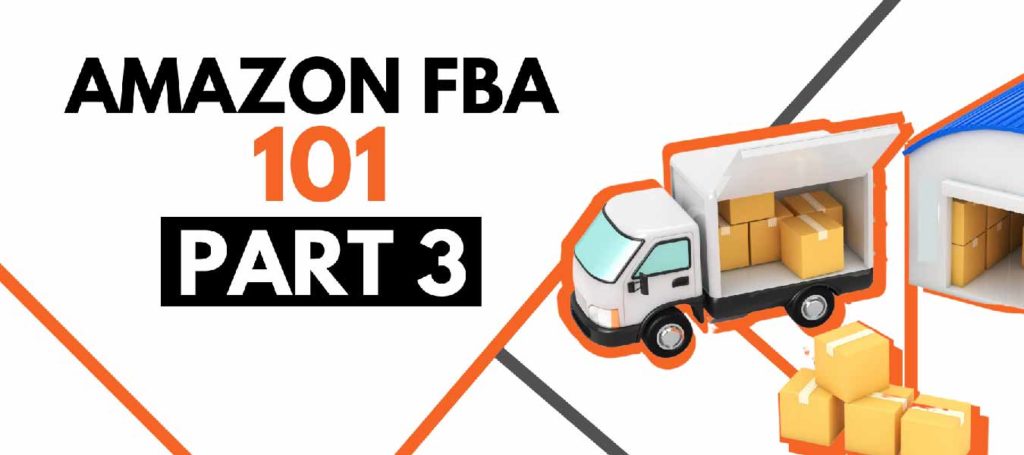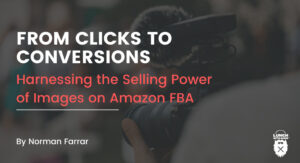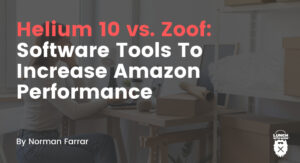Amazon FBA 101 Part 3: How to Source Products to Sell on Amazon
By Norman Farrar
Choosing the correct things to sell on Amazon may be challenging. Here’s an Amazon 101 to learn how to source products to sell on Amazon. Half the struggle is sifting through the data to identify popular, in-demand, and profitable items to evaluate. The second half is chasing those goods you’ve properly studied, and feel are worthwhile.
Once you’ve determined what things to offer and how much you can earn, the next step is to determine the best way to source them.

10 Common Sourcing Techniques
1.) Retail Arbitrage – Purchasing things at a discount from retailers and reselling them on Amazon for a profit.
Retail arbitrage sellers frequently trawl the clearance aisles of big box shops such as Walmart, Target, Big Lots, CVS, and Walgreens. Liquidation and surplus stores are also popular places for inventory shopping since everything they offer is deeply discounted – often up to 75% off retail.
While this method of sourcing goods might be time-consuming, it normally does not involve a substantial initial expenditure, as you are unlikely to be purchasing in quantity.
However, before you use your credit card to make purchases, be sure you understand the advantages and disadvantages of utilizing business credit cards to finance your inventory.

3.) Drop-Shipping – Purchasing products from a shop or wholesaler following an Amazon sale and having them shipped straight to the client.
If you don’t want to be responsible for inventory management, dropshipping may be the best solution for you. It’s a way of fulfillment that enables internet merchants to sell things without actually owning the inventory.
Rather than that, you rely on a third-party vendor, such as a wholesaler, to deliver items to clients. The great aspect is that the supplier is completely invisible to the buyer, giving the impression that they are purchasing directly from you.
The primary advantage of dropshipping is that you save the upfront investment of inventory. You are only charged when a sale is made. As a result, it is a low-risk way of fulfillment for new vendors.
4.) Wholesale – Purchase huge quantities of things straight from manufacturers/brand owners and resell on Amazon.
Purchasing wholesale is a time-tested method of selling on Amazon. It has a low entrance barrier and is rather easy to scale. You’ll collaborate with existing manufacturers and won’t be responsible for developing new ASINs. Furthermore, the majority of wholesale commodities already have a sales rank or demand.
Most sellers also can earn better rates or negotiate better terms on future purchases after a solid business connection with the manufacturer is established.
When purchasing things wholesale, you must go through the appropriate approval procedures to resale a certain product or brand. If you are not an authorized seller, you run the risk of being detected for copyright infringement and having your Amazon account suspended.
With the possibility to sell millions of dollars every year, wholesale may be the best solution for you.
5.) Private Label – Purchase generic items straight from manufacturers, customize them with your labels, and resell under your brand.
While private label retailers continue to buy items from manufacturers, unlike wholesalers, they have some input over product design and can use their brand name. This means you have complete control over the product’s quality, labeling, and packaging.
You may need to assemble a team to assist you with all aspects of the project (pictures, sales text, and packaging design, for example), but you may outsource most of this.
6.) B2B Marketplaces – Purchase in bulk (and at a discount) from international B2B marketplaces
Numerous Amazon sellers obtain their items through business-to-business marketplaces, where they may connect with a diverse selection of manufacturers and apply for bulk orders and quantity discounts.
The following are the top B2B marketplaces:
- Alibaba.com – The world’s largest B2B wholesale marketplace: Join today to sell wholesale to over 10 million buyers worldwide. There are thousands of categories available.
- ThomasNet — ThomasNet is a market-leading online platform for B2B seller discovery and product procurement, with over 500,000 suppliers.
- IndiaMart — India’s largest business-to-business marketplace, with over 3.5 million buyers and a similar selling style to Alibaba.
- eWorldTrade — Based in the United States, this platform is the world’s fastest expanding B2B site, serving over 220 nations.
7.) Auctions and Thrift Shops – A special sort of retail arbitrage that occurs at auctions and thrift stores.
While the most frequent retail arbitrage method is to browse clearance aisles and liquidation sales, other Amazon sellers have discovered profitable products by visiting auctions, garage sales, and thrift stores.
Auctionzip.com, a directory of local and online auctions, is a wonderful place to start.
8.) eBay – An eBay-specific form of online arbitrage.
If you’re unable to attend an auction in person, eBay is another alternative. You can come upon one-of-a-kind things at a reduced price. Or, at the absolute least, peruse finished eBay listings to get a feel of what things aren’t yet available on Amazon but may sell well as a consequence.
9.) Produce Your Own Products – Complete control over the manufacture of a certain item
You may create your own if you want complete control over your items and brand.
You may, for instance, create your own cosmetics line. You’d create your own foundation, mascara, and lipstick formulas, work with a manufacturer to manufacture and package the items, and then sell them on Amazon.
Naturally, this is more expensive and time-demanding than wholesale or private label, but you would have complete control.
10.) Outsourcing/Virtual Assistants – Subcontract the procurement of inventory to an employee or virtual assistant.
Want to avoid doing any of the work? Outsourcing is on the other extreme of the inventory sourcing range. Depending on the size of your firm, you may be able to hire an employee or virtual assistant to assist you in sourcing items.
These are some sourcing ideas to get you started. Then, as you delve deeper into your Amazon seller journey, you’ll gather enough experience to make an informed decision regarding the future of your product sourcing.
Tips for Negotiating With Suppliers

Obtaining permission from a supplier is one of the most challenging processes an Amazon wholesale seller must do.
Following the selection of a product to sell and shortlisting of Amazon FBA wholesale suppliers, the next critical stage is negotiating with the suppliers and encouraging them to do business with you.
If you’re having difficulty navigating this phase, the following are some dos and don’ts to keep in mind when negotiating with prospects:
- Dos:
- Regard yourself as a “big fish” (willing to commit and build a real business with your suppliers)
- Show off in moderation
- Treat your suppliers with respect
- Request a sample from your suppliers
- Don’ts:
- Act like a first-timer
- Meet your suppliers without buying criteria
- Be afraid to ask some questions
- Just focus on your earning
Finding the correct supplier is a vital aspect in ensuring success when selling wholesale on Amazon. However, you must first understand how to negotiate and deal with them. Don’t just behave as an Amazon wholesaler. Demonstrate to them that you mean business and are willing to be a long-term partner.
The Quality of Your Product is Essential

This goes without saying. Quality control is critical for Amazon sellers throughout the supply chain. This step ensures that your items are examined before transportation, avoiding heartwarming stories.
Once you’ve received payment in full and dispatched your merchandise, you’ve passed the point of no return. If you discover quality issues after the items arrive, it is too late.
As a result, you must check that your items fulfill all technical standards and quality criteria before paying the remainder.
Build Solid Relationships with Suppliers

Establishing a good relationship with an Amazon supplier is critical to producing high-quality items.
How exactly?
Because good supplier connections increase your chances of obtaining new items in development, a greater level of customized service, preferred pricing, and even unique terms, these factors add up to greater overall product quality.
When you consider that 53% of customers believe quality is essential when purchasing a product, high-quality items result in more sales and a stronger business. And increasing the quality of your suppliers is one of the first steps toward improving the quality of your products.
Here’s what our experts advise for building strong supplier relationships:
- Stick with a few key suppliers. By focusing on a few important suppliers with whom you can develop deeper relationships, you can better use those ties when they are needed. This may seem especially tough if your supply chain is extensive.
It is advised that you diversify your overseas supplier base slightly more to avoid risks associated with political instability or natural disasters. According to Supply Chain Review, around 55% of international suppliers would be unable to sustain their workflow in the event of a disaster. Thus it’s critical to plan for the worst-case scenario.
- Understand how your suppliers work. As emphasized by the Harvard Business Review, developing insights and knowledge of your supplier’s operation provides several benefits. This demonstrates both respect for their business and a desire for co-prosperity. It implies that you’re committed to creating a partnership that benefits both of your businesses.
- Talk through misunderstandings. When an unavoidable misunderstanding or issue arises with a supplier, conversation is critical to resolving the issue successfully. For example, perhaps they supplied you with a batch of substandard ingredients, or you’re experiencing cash flow or payment collection difficulties.
Whatever the situation, being open and honest helps stop it from escalating and creating irreversible harm to the relationship. Therefore, pursuing a resolution that satisfies both sides is a critical component of the supplier relationship management process.
- Provide proper and honest feedback. When feedback is provided frequently and covers both triumphs and faults of a supplier, it is viewed as a natural extension of the supplier relationship. Additionally, it indicates a dedication to collaboration. This enables vendors to address concerns more quickly.
- Meet your suppliers face-to-face. Despite living in a digital age dominated by email and text, try meeting your suppliers in person.
It does not have to be an extended visit. A simple factory tour and lunch may go a long way. While you’re there, attempt to learn more about them personally and then utilize that information to strengthen the friendship.
- Be honest and integral in your actions. Suppliers who trust you, like with any relationship, will treat you more fairly. Refrain from using even a small white lie to get a provider to behave.
Always act reasonably and with integrity toward others, and you’ll discover that they’re more inclined to reciprocate. Additionally, do not be scared to shed light on difficult circumstances. Simply remember to keep your attention on solutions rather than issues.
- Keep cultural differences in mind. Whether you work with domestic or foreign suppliers, understanding your supplier’s cultural nuances will help you develop a strong connection.
By asking questions and listening closely, you can ascertain how people see respect and set boundaries. This can aid in the development of a positive rapport and the long-term stability of your partnership.
- Build a long-lasting partnership. Bear in mind that your connection with suppliers is bidirectional. As long as you treat them as partners rather than subordinates, you should be on your way to establishing a customer-supplier relationship that both sides value for their continued success.
Norman Farrar Entrepreneur and businessman Norman “The Beard Guy” Farrar stands at the forefront of the economic mega-machine known as Amazon Marketplace. As a leading expert with over 25 years of product sourcing, development, and branding expertise, Norm is an advisor to many and an inspiration to all.
- Amazon ASINs https://www.nchannel.com/blog/amazon-asin-what-is-an-asin-number/
- eBay https://www.ebay.com/n/all-categories
- FirstInsight.com Survey Data – https://www.firstinsight.com/press-releases/quality-more-important-than-price-study
- Supply Chain Review – https://www.scmr.com/article/managing_risk_in_the_global_supply_chain1
- Harvard Business Review – https://hbr.org/2004/12/building-deep-supplier-relationships
About The Author

Norman Farrar Entrepreneur and businessman Norman “The Beard Guy” Farrar stands at the forefront of the economic mega-machine known as Amazon Marketplace. As a leading expert with over 25 years of product sourcing, development, and branding expertise, Norm is an advisor to many and an inspiration to all.
- Amazon ASINs https://www.nchannel.com/blog/amazon-asin-what-is-an-asin-number/
- eBay https://www.ebay.com/n/all-categories
- FirstInsight.com Survey Data – https://www.firstinsight.com/press-releases/quality-more-important-than-price-study
- Supply Chain Review – https://www.scmr.com/article/managing_risk_in_the_global_supply_chain1
- Harvard Business Review – https://hbr.org/2004/12/building-deep-supplier-relationships
Recent Posts
Follow Us
Categories
- Accounting
- Ads
- Amazon
- Amazon FBA
- Amazon FBA
- Amazon Sellers
- Branding
- Community
- Content
- Content Marketing
- Crowd-sourcing
- Crypto
- Cybersecurity
- Dropshipping
- ecommerce strategy
- Exiting
- FBA
- Influencer
- Inventory
- Keyword Optimization
- Launching
- Lifestyle
- Marketing
- Marketing Strategy
- Packaging
- PPC
- Press Release
- Public Relations
- Scaling
- SEO
- Shopify
- Social Media
- Sourcing
- Trademarks







